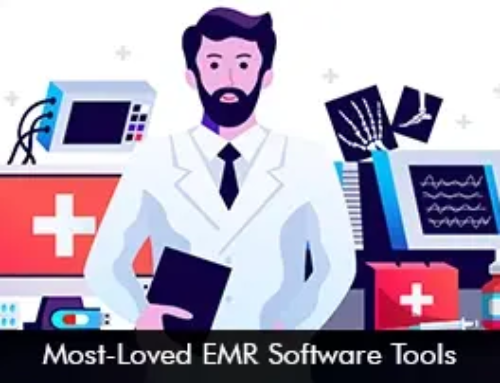Electronic medical records and private health information have become valuable resources that can impact people’s quality of life all around the world. As blockchain technology develops and standards change, it might completely transform the sharing and management of medical records, improving patient outcomes in the process.
Electronic Medical Records:
Advanced EMR Software is a cloud-based provider of Practice Management (PM) and Electronic Medical Records (EMR) software solutions. It offers small physician practices and major healthcare organizations (hospitals, PCMH, ACOs) in the US industrial-grade computing expertise. Without interfering with daily operations, the web-based EMR system automatically upgrades to handle regulatory changes like Meaningful Use and ICD-10.
Importance of EMRs in the today’s World:
For the purpose of patient diagnosis and treatment, nurses and physicians rely heavily on electronic medical records. This data, however, needs to be kept safe and shielded from unauthorized access because it is extremely private and confidential. In electronic medical records, patients’ personal information such as name, age, gender, address, and phone number are kept together with diagnostic information including diagnosis, prescription, and lab results.
The growth of IOT has brought with it the spread of technology as a useful asset to healthcare services, albeit not without challenges. There is virtually little interconnection and most of today’s healthcare systems are focused on healthcare practitioners.
Electronic Medical Records (EMRs) Using Blockchain Technology:
- In many fields, but especially in healthcare, blockchain technology has shown to be an essential instrument for guaranteeing security and dependability.
- The blockchain is used in EMRs to create an append-only chain of transaction blocks that guarantees the confidentiality and integrity of patient medical records.
- We want to protect patient data, allow selected professionals to access medical records, and protect user privacy by utilizing blockchain.
- Only once the patient has been given access will the doctor obtain prescription information, guaranteeing complete protection for both sides.
- Blockchain consensus algorithms demand consent from current nodes before adding new transactions and ensure block consistency.
- Due to worries about sensitive data leaks, traditional healthcare systems frequently lead to delays in data interchange and stringent access restrictions by adding blockchain technology.
Permanent Record Management:
- Each transaction on the blockchain is cryptographically connected to the one before it, creating a decentralized and unchangeable ledger.
- This improves the integrity of medical data by making sure that once a record is added to the blockchain, it cannot be removed or tampered with.
Privacy Assurance and Data Protection:
- Patient data is kept private and safe because of blockchain’s cryptography principles.
- Patients have more control over who can access their data by using access control methods and encryption to restrict access to their medical records.
Interoperability:
- The lack of interoperability across various EMR’s systems used by clinics, hospitals, and other healthcare providers is one of the major problems facing the healthcare industry.
- By offering a standardized protocol for securely exchanging and accessing medical records across many platforms, blockchain can promote interoperability.
Patient Liberation:
- Patients will have more control over their health data with blockchain-based EMRs.
- They can monitor who has viewed their data and when, as well as securely allow researchers, healthcare professionals, and other appropriate parties to access their records.
Streamlined Operations:
- Due to its ability to provide a clear and impenetrable transaction audit trail, blockchain technology can expedite administrative tasks like billing and processing insurance claims.
Reduced Fraudulence and Inaccuracies:
- Blockchain records’ immutability lowers the possibility of fraud and mistakes in medical data by offering a reliable and open method of documenting and confirming transactions.
EMR sharing is regarded as a practical strategy for enhancing the standard of healthcare, accelerating biomedical research, and reducing medical costs. Patients in today’s society don’t stick to one hospital or physician. They may be moved from one hospital to another, get medical monitoring and therapy, and see different physicians and clinics. Exchange of the patient’s medical records is required in these situations in order to provide appropriate therapy.








